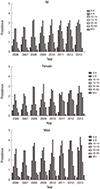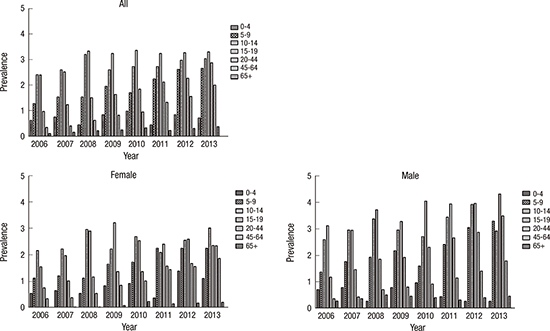1. Kainulainen K, Karttunen L, Puhakka L, Sakai L, Peltonen L. Mutations in the fibrillin gene responsible for dominant ectopia lentis and neonatal Marfan syndrome. Nat Genet. 1994; 6:64–69.
2. Dietz HC, Loeys B, Carta L, Ramirez F. Recent progress towards a molecular understanding of Marfan syndrome. Am J Med Genet C Semin Med Genet. 2005; 139C:4–9.
3. McKusick VA. The defect in Marfan syndrome. Nature. 1991; 352:279–281.
4. Robbins SL, Cotran RS, Kumar V. Pocket Companion to Pathologic Basis of Disease. Philadelphia, PA: W.B. Saunders Company;1991.
5. Habashi JP, Judge DP, Holm TM, Cohn RD, Loeys BL, Cooper TK, Myers L, Klein EC, Liu G, Calvi C, et al. Losartan, an AT1 antagonist, prevents aortic aneurysm in a mouse model of Marfan syndrome. Science. 2006; 312:117–121.
6. Groth KA, Hove H, Kyhl K, Folkestad L, Gaustadnes M, Vejlstrup N, Stochholm K, Østergaard JR, Andersen NH, Gravholt CH. Prevalence, incidence, and age at diagnosis in Marfan syndrome. Orphanet J Rare Dis. 2015; 10:153.
7. Keane MG, Pyeritz RE. Medical management of Marfan syndrome. Circulation. 2008; 117:2802–2813.
8. De Paepe A, Devereux RB, Dietz HC, Hennekam RC, Pyeritz RE. Revised diagnostic criteria for the Marfan syndrome. Am J Med Genet. 1996; 62:417–426.
9. Loeys BL, Dietz HC, Braverman AC, Callewaert BL, De Backer J, Devereux RB, Hilhorst-Hofstee Y, Jondeau G, Faivre L, Milewicz DM, et al. The revised Ghent nosology for the Marfan syndrome. J Med Genet. 2010; 47:476–485.
10. Rothman KJ, Greenland S, Lash TL. Modern Epidemiology. 3rd ed. Philadelpia, PA: Lippincott Williams & Winkins;2008.
20. Jang SY, Ju EY, Seo SR, Choi JY, Park SJ, Kim DK, Park SW. Changes in the etiology of valvular heart disease in the rapidly aging Korean population. Int J Cardiol. 2014; 174:355–359.
21. Chiu HH, Wu MH, Chen HC, Kao FY, Huang SK. Epidemiological profile of Marfan syndrome in a general population: a national database study. Mayo Clin Proc. 2014; 89:34–42.
22. Kwun Y, Kim SJ, Lee J, Isojima T, Choi DS, Kim DK, Huh J, Kang IS, Chang M, Cho SY, et al. Disease-specific growth charts of Marfan syndrome patients in Korea. J Korean Med Sci. 2015; 30:911–916.
24. Lim AY, Song JS, Kim EK, Jang SY, Chung TY, Choi SH, Sung K, Huh J, Kang IS, Choe YH, et al. Clinical characteristics of Marfan syndrome in Korea. Korean Circ J. 2016; 46:841–845.
25. Yuan SM, Jing H. Marfan’s syndrome: an overview. Sao Paulo Med J. 2010; 128:360–366.






 PDF
PDF ePub
ePub Citation
Citation Print
Print




 XML Download
XML Download